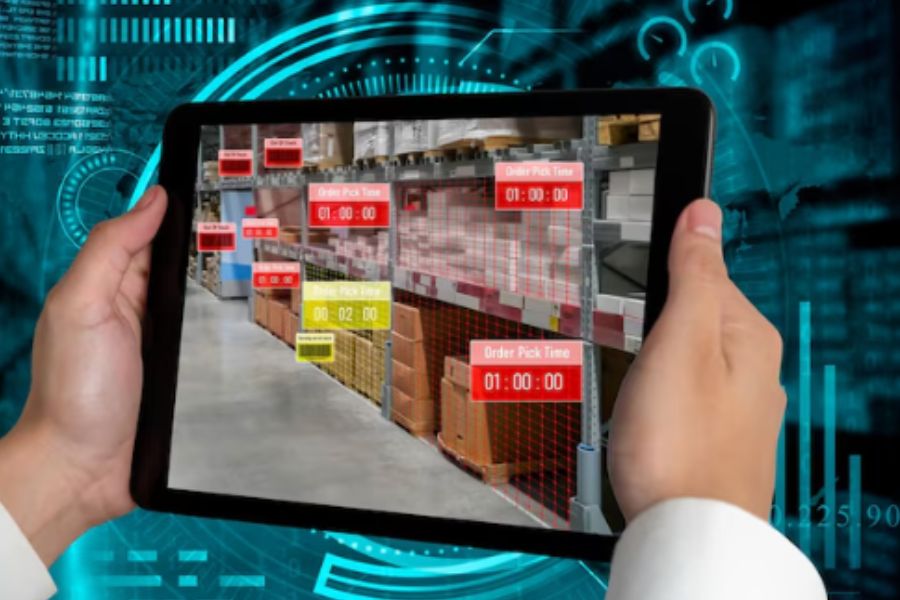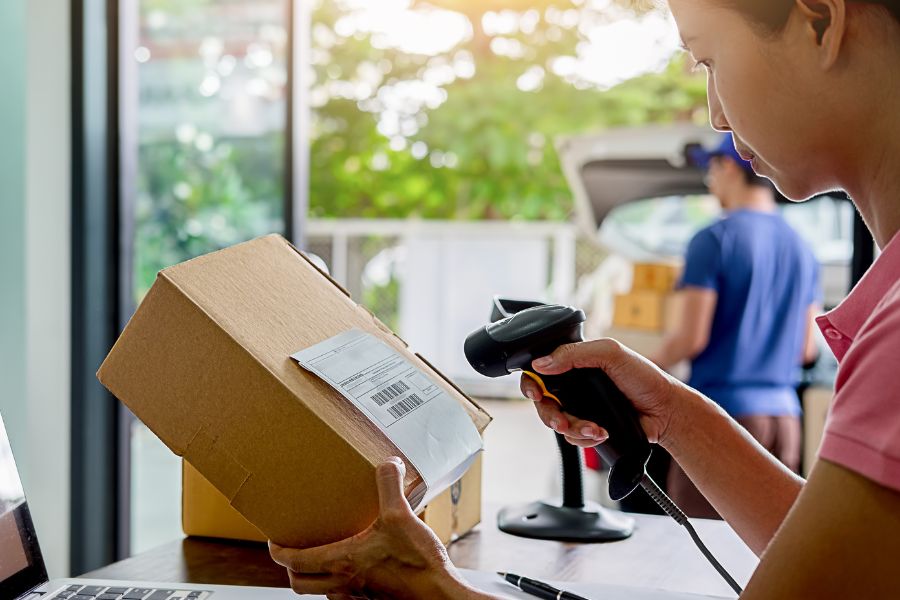Keeping track of stock shouldn’t feel like herding cats. Yet that’s exactly what it turns into when teams rely on outdated methods. Paper logs, clunky spreadsheets, or half-baked tools slow everything down. Mistakes slip through. Sales stall. Staff burn out. That’s where smarter systems shine. The best inventory management software features don’t just help with counting. They remove roadblocks, keep numbers accurate, and keep your team focused on what matters: selling and scaling.
We’ll walk you through the key features that make a real difference so you can choose smarter and scale faster.
Highlights:
- Smarter inventory management helps modern businesses reduce stockouts, cut carrying costs, and respond faster to shifting demand across sales channels.
- Must-have inventory software features include real-time tracking, barcode scanning, automated reordering, multi-location control, demand forecasting, visual reporting, and mobile access.
Benefits Modern Businesses Gain from Smarter Inventory Management
Smarter inventory systems don’t just make life easier. They help businesses move quicker, plan better, and avoid costly mistakes. We’ll show you what that looks like in practice.
Manual tracking methods don’t cut it anymore
Let’s be honest. Manually logging stock movements is like using a flip phone in a smartphone world. It’s slow, full of errors, and nearly impossible to scale. A single missed update can throw off your whole inventory count, especially during peak seasons or sales events. Out-of-stock items cost U.S. retailers an estimated $82 billion a year, according to NielsenIQ. That’s around 7% of potential CPG sales gone, just because the system didn’t catch it in time.
In contrast, cloud-based tools update stock levels in real time. Whether someone buys in-store or online, the system catches it instantly. You get one version of the truth with no guesswork and no crossed wires.
Real-time data drives better decisions
Decisions made on gut instinct? Risky. Decisions made on yesterday’s numbers? Already outdated.
The smartest inventory systems serve up real-time data that’s easy to read and act on. Think of it like having a dashboard that shows what’s flying off shelves, what’s about to run out, and what’s just sitting there collecting dust. That clarity changes the game. McKinsey found that smart automation in inventory planning can cut planning costs by up to 30% and shrink stock shortages by 25%.
It also helps catch problems before they become full-blown crises. Overstock issues? Flagged. Sudden drops in a top seller? Spotted. You’re not just reacting. You’re ahead of the curve.
►►► Optimal solution set for businesses: Multi store POS, Next-gen POS, Inventory Management Software (MSI), Self Service, Automation, Backorders
Features define your system’s true value
Not all inventory tools are created equal. Some give you fancy dashboards but lack reordering logic. Others are great at reports but clumsy when it comes to syncing across locations.
What sets a system apart isn’t the brand. It’s the features. The right set of inventory management software features is what turns a decent platform into a serious business asset. That includes basics like real-time tracking and barcode scanning, but also deeper tools like demand forecasting, supplier management, and AI-driven suggestions.
You don’t just want software that helps count products. You want a system that helps you sell smarter, faster, and with fewer headaches.
Now, we’ll get into those must-have features in the below section.
Core Inventory Management Software Features You Can’t Skip
These aren’t just nice-to-haves. They’re the backbone of any system that actually works. We’ll break down the key features you need to keep stock under control and your team one step ahead.
Real-Time Inventory Tracking
Inventory changes fast. Without live updates, you’re just guessing. Real-time tracking keeps tabs on every move like sales, returns, transfers, across all sales channels. You always know what’s in stock, where it’s stored, and what needs attention.
No more overselling. No more “out of stock” surprises.
Barcode Scanning and Tagging
Manual entry is a time bomb. One wrong digit and the whole system goes sideways. That’s why barcode scanning is a must. It speeds things up, cuts down errors, and gives instant access to item details.
Some systems even let you create and print custom tags. Want to scan by SKU, serial number, or variant? No problem.
Automated Reordering and Stock Alerts
Stockouts kill momentum. Overstock wastes money. Automated reordering walks the line between both.
Set reorder points, and the system pings you or better yet, creates a purchase order on the spot. Smart alerts help you fix problems before customers even notice.
Multi-Warehouse and Location Management
Running more than one store? Using third-party logistics? Inventory needs to move between places without a spreadsheet circus.
Multi-warehouse tools show exactly where each item is and help manage stock transfers between locations. Centralized control, local visibility.
Demand Forecasting and Planning
Guesswork isn’t a strategy. A good system looks at sales trends, seasonality, and past behavior to predict what you’ll need next.
Some use AI to spot patterns your team might miss. No more bulk-buying items that won’t sell. No more scrambling to restock hot sellers after they’re gone.
Comprehensive Reporting and Visual Dashboards
Numbers matter, but no one wants to scroll through endless spreadsheets. A clean dashboard tells the story at a glance: best-sellers, slow movers, shrinkage, and trends.
Custom reports make it easy to dig deeper. Weekly restock report? Done. Sales by location? Ready in clicks.
Seamless Integration With POS, ERP, and eCommerce
If your systems don’t talk to each other, things fall apart fast. A top-tier platform connects with your POS, ERP, and online store.
That means inventory updates in real time, unified sales data, and no double entry. Shopify POS, BigCommerce POS, Magento POS, NetSuite POS, whatever you use, it should plug right in.
Mobile Access and Remote Inventory Control
Inventory doesn’t live in one place. Neither should your tools.
Mobile-ready systems let staff check stock, receive shipments, or count inventory from the floor or from another city. Great for warehouses, pop-up shops, or managers on the go.
Supplier and Purchase Order Management
Keeping track of vendors in a spreadsheet? Not ideal. The best systems centralize everything from contact details to lead times, pricing, and performance.
You can generate POS automatically, track order status, and see which suppliers consistently deliver late or short. Smarter sourcing, fewer headaches.
Inventory Categorization and Product Tagging
When your catalog grows, good tagging keeps chaos at bay.
Categories, collections, tags, variants all help group products properly makes searching easier and reporting cleaner. Need to pull data for all size M jackets in black? Easy.
Role-Based Access and Security Logs
Not everyone needs full access. Role-based permissions keep things tight.
Managers can update stock. Floor staff can check availability. Finance can run reports. And everything’s logged, so if someone deletes 100 units by mistake, you’ll know who, when, and how it happened.
All these inventory management software features aren’t just bells and whistles. They’re the tools that keep your business running smooth, no matter how fast things move.
The Power of AI in Inventory Software
Modern inventory isn’t just about tracking. It’s about predicting. That’s where AI steps in. It doesn’t just automate the busywork. It reads patterns, flags issues, and makes smarter calls faster than any human team.
- Automation That Saves Time: AI handles tasks like reorder creation, stock level adjustments, and inventory syncing without lifting a finger. No more chasing spreadsheets or checking reorder thresholds manually.
- Predictive Analytics for Smarter Stock Decisions: Instead of guessing, the system looks at past sales, seasonality, and even external signals. It recommends what to stock, when to order, and how much to hold before demand hits.
- Demand Patterns and Optimization: AI connects the dots between product velocity, customer behavior, and real-world conditions. It helps fine-tune stock levels across locations, so popular items stay available and slow movers don’t clog your shelves.
Specialized Features for Complex Needs
Every business has its own quirks. Standard inventory systems might cover the basics, but complex operations demand more. Specialized tools can mean the difference between barely managing and actually thriving.
- Inventory Software vs Warehouse Management: Inventory software tracks what’s available and where. Warehouse software goes deeper. It maps out shelf locations, handles picking and packing, and runs storage logistics. Some systems merge both for a tighter workflow.
- Parts and Component-Level Tracking: Selling bikes? Building electronics? Running a repair shop? You need more than SKU-level stock. You need visibility into every bolt, chip, and screw. This kind of tracking avoids assembly delays and ensures you always have the right parts in stock. If you operate in a niche like Bike, Electronics Store, or Toy & Hobby, these advanced features are must-haves to keep things running right.
Introducing ConnectPOS – Your Retail Inventory Companion
Whether you’re running a single boutique or managing inventory across dozens of stores, ConnectPOS keeps your stock under control. It’s built to support real-time visibility, seamless operations, and efficient inventory flow no matter how complex your setup.
- Real-time stock syncing across in-store, warehouse, and online channels
- Multi-location inventory management with centralized control
- Barcode scanning, serial number tracking, and customizable product tagging
- AI-powered demand forecasting and smart reorder suggestions
- Real-time low stock alerts and automated purchase order creation
- Detailed inventory reports and intuitive dashboards for quick decisions with built-in report & analytics
- Integrated returns and exchange workflows
- Support for raw material tracking and bundled product management
- Custom stocktake tools with flexible cycle count options
- Multi-warehouse transfer management with accurate stock levels
- Offline mode for POS to keep selling even without an internet connection
- Native integrations with Shopify, Magento, BigCommerce, WooCommerce, and more
- Mobile-friendly interface for inventory control on the move
- B2B features like custom catalogs, quote requests, and tiered pricing
With ConnectPOS, you’re not just tracking stock. You’re building a system that runs smoother, sells faster, and grows with your business.
FAQs Inventory Management Software Features
1. What’s the most important feature in inventory software today?
Real-time tracking. Everything builds on it. Without it, accuracy and speed go out the window.
2. How can automation improve inventory handling?
It takes over the repetitive stuff like reorders or low stock alerts so your team can focus on more important tasks.
3. Is mobile access necessary for inventory management?
Definitely. Whether you’re in the stockroom, storefront, or working remotely, mobile access keeps your numbers close at hand.
Final Thoughts
Solid inventory starts with the right tools. And the right tools start with the right inventory management software features that track in real-time, automate the boring bits, and actually help you grow.
ConnectPOS brings all that together into one smooth system. No fluff. No disconnects. Just inventory that works harder, so you don’t have to.
Need help finding the right setup for your store? Reach out to us today!
►►► Optimal solution set for businesses: Shopify POS, Magento POS, BigCommerce POS, WooCommerce POS, NetSuite POS, E-Commerce POS



